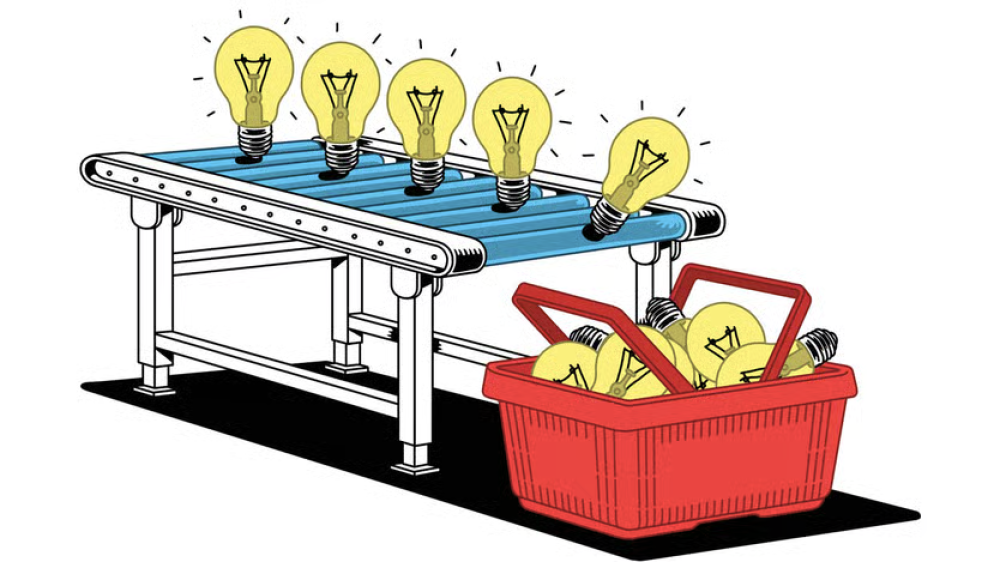
Trung Quốc thành cường quốc đổi mới sáng tạo như thế nào?
-
Fusion Energy Tech, công ty tách từ phòng thí nghiệm hạt nhân Hefei, đang thương mại hóa công nghệ plasma, minh chứng cho mô hình “chuỗi đổi mới” mà Trung Quốc áp dụng: từ phòng thí nghiệm nhà nước → doanh nghiệp → thương mại.
-
Trung Quốc đã thống trị nhiều lĩnh vực: xe điện, pin lithium, robot hình người, taxi bay, và đang tiến vào công nghệ lượng tử, y sinh, màn hình AMOLED.
-
Các viện nghiên cứu và trường đại học thương mại hóa sáng chế qua chợ công nghệ, đấu giá bằng sáng chế và hợp tác trực tiếp với doanh nghiệp. Doanh thu từ chuyển giao công nghệ 2019–2023 gần gấp đôi, đạt 205 tỷ nhân dân tệ (29 tỷ USD).
-
Hefei là hình mẫu thành công, kết nối nghiên cứu, doanh nghiệp và chính quyền, tập trung giải quyết “nút thắt công nghệ” như thiết bị lượng tử làm lạnh sâu, vốn trước đây phải nhập khẩu.
-
Chính phủ trung ương muốn nhân rộng mô hình này. NDRC được cấp quỹ 1 nghìn tỷ nhân dân tệ (141 tỷ USD) đầu tư công nghệ; MIIT giám sát thương mại hóa trong khu công nghiệp, bổ nhiệm lãnh đạo có kinh nghiệm phát triển năng lượng xanh.
-
Doanh nghiệp tư nhân hưởng lợi nhờ dễ chuyển đổi ngành. Ví dụ: Xiaomi chỉ mất 3 năm từ điện thoại sang sản xuất ô tô điện.
-
Tuy nhiên, chi phí quá lớn: khoảng 2% GDP dùng để trợ cấp. Đầu tư mạo hiểm tư nhân giảm 41% nửa đầu 2025. Năng suất nhân tố tổng hợp đình trệ.
-
Hệ quả: thừa công suất nghiêm trọng, đa số hãng EV không có lãi, cạnh tranh “nội cuộn” (involution: nhiều bên tranh giành khốc liệt trong một thị trường hạn chế, tạo ra đầu tư và nỗ lực quá mức nhưng không mang lại hiệu quả kinh tế tương xứng), nhiều công nghệ phát triển mà chưa có thị trường thực sự.
-
Nợ công (bao gồm nợ của các công ty tài chính địa phương) đã đạt 124% GDP năm ngoái. Các chuyên gia cảnh báo mô hình này không bền vững và có thể buộc ông Tập Cận Bình giảm hỗ trợ công nghệ.
📌 Trung Quốc đã trở thành cường quốc đổi mới sáng tạo với xe điện, pin, công nghệ lượng tử và taxi bay nhờ mô hình “chuỗi đổi mới” nhà nước. Các viện nghiên cứu và trường đại học thương mại hóa sáng chế qua chợ công nghệ, đấu giá bằng sáng chế và hợp tác trực tiếp với doanh nghiệp. Hefei là hình mẫu thành công, kết nối nghiên cứu, doanh nghiệp và chính quyền, tập trung giải quyết “nút thắt công nghệ. Doanh thu chuyển giao công nghệ Trung Quốc đạt 29 tỷ USD năm 2023, Xiaomi từ smartphone sang ô tô chỉ trong 3 năm. Tuy nhiên, chi phí trợ cấp tới 2% GDP, đầu tư tư nhân giảm 41%, nợ công 124% GDP và dư thừa công suất đe dọa tính bền vững. Nếu giảm hỗ trợ, “băng chuyền đổi mới” có nguy cơ chững lại.
https://www.economist.com/business/2025/08/25/how-china-became-an-innovation-powerhouse
How China became an innovation powerhouse
Its state-led model has generated impressive results. But the costs are mounting
Share
A conveyor belt with lightbulbs rolling on it and falling into a shopping basket.
Illustration: Olivier Heiligiers
Aug 25th 2025
|
CHONGQING, HANGZHOU AND SHANGHAI
|
6 min read
Most STARTUPS need time to prove that they can be trusted with investors’ money, let alone dangerous technologies. But not Fusion Energy Tech, a Chinese company in the city of Hefei that was carved out two years ago from a nuclear-research lab. In July it announced that it would be commercialising a plasma technology derived from fusing the nuclei of atoms, which produces a reaction much hotter than the sun. It has already developed a security-screening device using related technology that is popping up in local metro stations. Commuters walk past them every day.
Xi Jinping, China’s supreme leader, is fixated on beating the West in new technologies. Chinese companies already dominate areas including electric vehicles (EVs) and lithium batteries, and are fast taking the lead in emerging fields such as humanoid robots. The country’s growing technological prowess is thanks in part to the Communist Party’s conveyor belt of innovation, which takes ideas developed in state-run labs and universities and turns them into commercial products. The process, often referred to as an “innovation chain” in policy documents, has led to rapid advances in a number of fields. Yet the costs of the model are also mounting. Critics argue that it has wrought a vast misallocation of resources which is dragging down China’s economic growth. Before long it could prove unsustainable.
China’s innovation chains often start with grants for researchers, who find a placement in state-backed labs. These in turn are fertile ground for government officials, who identify good ideas and help research teams set up companies, often within local development zones. A recent beneficiary of that process is Theseus, a Chongqing-based company that makes computer-vision sensors. In 2019 it was little more than a group of scientists from the state-backed Institute of Optics and Precision Mechanics in the city of Xi’an, who would meet in a teahouse to discuss commercialising their work. A district government in Chongqing, hoping to develop a supply chain around their technology, provided funding and helped the scientists launch their company in an industrial zone in 2020. By 2024 Theseus had become a leading player in its field. It has hired nationally renowned scientists, and in May this year announced it had developed a new display screen using AMOLED technology, which makes graphics smoother, in partnership with state-owned China Mobile, the country’s largest telecom.
State-backed research institutes, including labs and universities, are increasingly commercialising their innovations in other ways, too. Some have established marketplaces where companies can bid directly on their patents. The Heilongjiang Academy of Agricultural Sciences in Harbin, another city, recently auctioned off the patent behind a genetically modified soyabean it had developed. In such cases an institute will often deploy technicians to the company buying the technology to help them make use of it. One gauge of the deepening ties between China’s private sector and its research institutes is the revenue the latter collect when they sell their ideas to companies, co-develop technology or provide consulting services. Between 2019 and 2023, the latest year available, that figure nearly doubled, to 205bn yuan ($29bn).
The benefits of collaboration flow in both directions. In biotech, state researchers have been able to tap into private resources to aid their work, notes Jeroen Groenewegen-Lau of MERICS, a think-tank in Berlin. For example, university researchers are often granted access to industrial fermentation facilities at local companies, which are used to harvest bacteria.
Hefei offers perhaps the best example of the drawing together of China’s scientific and business communities under state direction. The city’s government invests in private companies, builds supply chains around them and acts as an interface between labs, universities and the private sector. Fusion Energy Tech is but one of its many successes; plasma-fusion cancer treatments developed in the city are now entering trials, and quantum-secure mobile services developed there are already on the market. Hefei’s government has focused in particular on working through technological bottlenecks that market dynamics alone may have little incentive to resolve. One example is in the quantum industry, where certain low-temperature dilution devices that were available only from a few foreign suppliers are now being built locally, even if some experts remain sceptical of their performance.
China’s central government hopes to take the best such systems of collaboration and replicate them across the country. In March the National Development and Reform Commission, run since 2023 by Zheng Shanjie, formerly the highest-ranking party official in Anhui province, where Hefei is located, was granted control over a 1trn-yuan fund for investing in technology. The Ministry of Industry and Internet Technology (MIIT) has begun overseeing the commercialisation of ideas within industrial zones, notes Hutong Research, a Beijing-based consultancy. In April Li Lecheng, who is credited with transforming two inland cities into hubs for green energy, was appointed the head of MIIT, suggesting that the party hopes to see many more such transitions.
For Chinese companies, the breadth of innovation under way in China offers significant advantages. For one thing, it makes it easier to break into new industries, notes Kyle Chan, a researcher at Princeton University. One example is Xiaomi, originally a smartphone-maker, which was able to build a successful EV business in China in about three years. It has also helped give rise to new industries. China has become a leader in the nascent business of flying taxis in part by drawing on its expertise in both EVs and drones.
From innovation to involution
For all these successes, however, China’s innovation model comes with costs—and these are mounting. Perhaps as much as 2% of GDP goes towards subsidising industries in some form or another. As the state has played a greater role in directing innovation, private venture-capital investment has collapsed, falling by 41% year on year in the first half of 2025, according to KPMG, a consultancy.
The payoff from all the state largesse is also becoming increasingly unclear. China’s total factor productivity, which measures how well it makes use of capital and labour, has stalled. Some efforts by local governments to build clusters of expertise have failed, including the city of Nanning’s attempt to develop an EV supply chain.
State subsidies have also led to severe overcapacity in many industries. The vast majority of China’s EV-makers, for example, are not profitable. Too many businesses now fight for the same customers, a state of unbridled competition with few winners often referred to as “involution”. Meanwhile, pursuing customers abroad is becoming more difficult amid resistance from foreign governments. What is more, some technologies are being developed in China without clear evidence of a market for them. People working on humanoid robots complain that there are umpteen companies all producing similar products without much genuine demand.
China’s state-led approach to innovation has helped create many world-class firms, but the return on investment may be too low for it to continue much longer. The debts China has accrued from funding innovation are vast and unsustainable, argues Daniel Rosen of Rhodium Group, a research firm. Last year public debt, including the amount owed by local-government financing vehicles, reached 124% of GDP. Eventually Mr Xi may have little choice but to dial down government support for new technologies. At that point China’s conveyor belt of innovation could grind to a halt. ■
Thảo luận
Follow Us
Tin phổ biến



